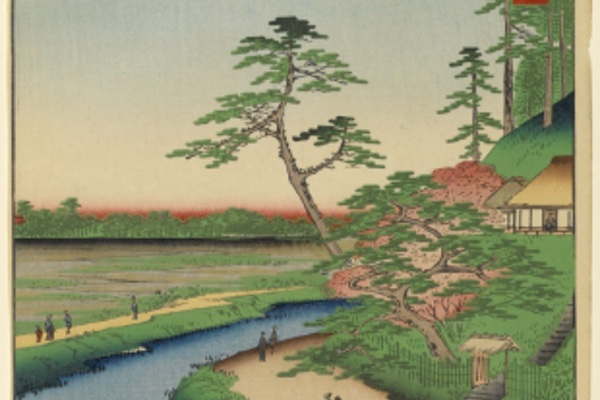By Eliot Gilbert
I’ve had a fling with haiku lately. Sometimes I pick out a collection of poems and take it out of the university library to read between the spastic wave crests of work. I like poetry collections and short story anthologies because I can get a small hit of literature to enjoy and ponder, no matter how busy I am.
This latest time I took out was A Collection on Bashō’s Haiku. Not that I know much about Japanese literature, but I know Bashō is perhaps one of the great gods of haiku, so I thought he would be a reasonable place to start.
Now, full disclosure: I didn’t previously know how truly different Japanese literature was before I bought a collection called “Modern Japanese Stories”. What I noticed most of all was just how “contemporary” it reads to my Western sensibility. I know it’s a modern translation, but I am more speaking of the narrative techniques; a lot of it reads fresh and clean, but surprisingly experimental in its narratology.
My suspicions of Japanese literature being quite “experimental” was confirmed when I cracked open the book on Bashō’s poetry.
In my snotty preconceived notions on the genre, I always assumed haiku to be fairly bland. Or at the very least, I assumed it wouldn’t translate into English all that well. In my defence, I have mostly been exposed to western attempts at the form, which so often to me read comically bad, or just too prosaic to be anything besides “Oh, look, three lines of words. Cool, I guess?”
In reality, haiku is fresh, exciting, abstract, and quite often filled with whimsy. Of course this is a credit to the translations. In the book’s introduction, the translator, David Landis Barnhill, even makes a notation on his translating philosophy, stating that he “tends towards the literal” because the “distinctive power of the original poem is usually captured most fully by staying close to what the original poem says and how it says it.” I like this philosophy, and feel fairly confident that the original ideas are communicated accurately. However, in translation, you always lose something, and in Bashō’s work, it’s probably the musicality of the verse. Still, the concept of the genre is quite “modern”.
The whole idea of haiku — as I understand it in its traditional form — is first of all, a tight bondage of syllabic demand in the verse. I’m sure most of you know it’s typically three lines, at 5/7/5.
Second of all, the haiku is meant to start and finish differently; there is meant to be two dramatic points. An image, and then a second image, creating a kind of two-part argument. Those who are familiar with the format of an Italian sonnet may see likeness in a volta.
Thirdly, haikus nearly always have to do with nature, painting small glimpses of a scene meant to provoke an emotional response, thereby encouraging the reader to meditate on and appreciate the aesthetic of it, rather than to decipher a concrete meaning.
There’s a lot of action packed into the three lines. What is of extraordinary significance to me, though, is the potential of this poetic form. Its brevity as well as dramatic demands have as great a potential as microfiction — it can create a dramatic moment in time. Unlike ideas yoked together in the most splendidly concise and elegant way, encouraging the reader to think and read closely.
I hope as poets we can continue to spread and grow the potential of the brief snippet of drama. More so than ever now, such brevity can be spread and appreciated easily. Come with me, so we can catch up to the few-century head start the Japanese have on us.


Hi Eliot,
I have this post featured now on home page, with a bit of editing.
A reminder: when you post, you need to pick a “topic” in your edit mode. Otherwise it won’t show up on our sidebar on our home page. So if you hadn’t emailed me, I wouldn’t have know it was up. May be a good reminder I should send out to members.
Nice post so go share as we will too!